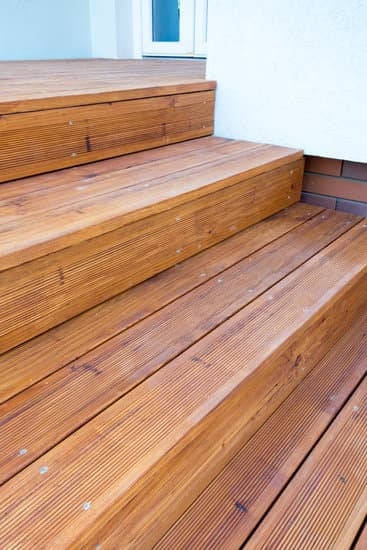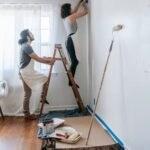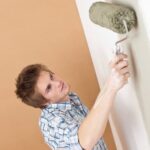Are you wondering, “How can I improve my home’s insulation?” Well, look no further. Proper home insulation plays a crucial role in maintaining energy efficiency and ensuring comfort within your living space. Insulation helps to regulate indoor temperatures, reduce energy consumption, and ultimately save you money on utility bills. In this article, we will explore the significance of home insulation and the various benefits it brings to homeowners.
A well-insulated home not only keeps you warm in the winter and cool in the summer but also provides a barrier against external elements, such as noise pollution and moisture. Inadequate insulation can result in uncomfortable drafts, fluctuating temperatures throughout your home, and higher energy bills due to heat loss or gain. By improving your home’s insulation, you can create a more comfortable living environment while also reducing your carbon footprint.
Whether you are experiencing drafty rooms, high energy bills, or inconsistent temperatures in different areas of your home, these are all signs that your insulation may need attention. In the following sections, we will delve into how to identify poor insulation in your home, conduct a DIY assessment of your current insulation levels, explore different types of insulation materials available to homeowners, and provide tips on installation techniques to enhance the overall efficiency of your home’s insulation system.
Stay tuned for valuable insights on optimizing your home’s insulation for improved energy efficiency and comfort.
Signs of Poor Insulation
Poor insulation in your home can lead to a variety of issues that can impact both your comfort and energy bills. One common sign of inadequate insulation is drafts in certain areas of your home, which can make it difficult to maintain a consistent temperature. If you notice that some rooms feel colder or hotter than others, it could be due to poor insulation causing fluctuating temperatures throughout your home.
Another clear indicator of poor insulation is high energy bills. When your home is not properly insulated, heating and cooling systems have to work harder to maintain the desired temperature, leading to increased energy consumption and higher utility costs. By improving your home’s insulation, you can help reduce your energy usage and save money on monthly bills.
If you are wondering how you can improve your home’s insulation, one way is to conduct a DIY insulation assessment. By following a step-by-step guide to evaluate the current levels of insulation in different areas of your home, you can identify where improvements are needed. This assessment will help you determine if additional insulation needs to be added or if existing insulation should be replaced for better results.
| Common Signs | Possible Issues |
|---|---|
| Drafts in Home | Inadequate Insulation |
| Fluctuating Temperatures | Poor Insulation Levels |
| High Energy Bills | Inefficient Insulation |
DIY Insulation Assessment
When wondering “how can I improve my home’s insulation,” one of the first steps is to conduct a DIY insulation assessment. This assessment will help you identify areas in your home that may have inadequate insulation, leading to energy loss and decreased comfort. By following a step-by-step guide, you can easily assess your current insulation levels and pinpoint where improvements need to be made.
Step 1: Checking Attic Insulation
Begin by inspecting the insulation in your attic, as this is often where significant heat loss occurs. Look for any gaps or thin areas in the insulation coverage. Measure the depth of your attic insulation – ideally, it should be between 10-14 inches for optimal energy efficiency.
Step 2: Examining Wall Insulation
Next, assess the insulation in your walls by removing an electrical outlet cover and using a flashlight to look inside. If you can see the insulation, check its thickness and condition. In older homes, it’s common to have insufficient wall insulation which can be resolved by adding more.
Step 3: Inspecting Floors
Don’t forget to check the insulation under your floors, especially in crawl spaces or basements. Ensure that there is adequate coverage and that there are no gaps or damage in the insulation material. Adding additional floor insulation can help maintain a comfortable indoor temperature.
By following these steps for a DIY insulation assessment, you will gain valuable insight into the current state of your home’s insulation and determine how best to make improvements for better energy efficiency and comfort.
Types of Insulation
Home insulation is a crucial aspect of maintaining energy efficiency and comfort in your home. Understanding the different types of insulation materials available for homeowners can help you make informed decisions on how to improve your home’s insulation. The right choice of insulation material can make a significant difference in reducing heat transfer, preventing energy loss, and ultimately saving you money on utility bills.
One common type of insulation material used in homes is fiberglass. Fiberglass insulation is made of fine glass fibers and is widely recognized for its affordability and effectiveness in reducing heat transfer. Another popular option is cellulose insulation, which is made from recycled paper products treated with chemicals to resist fire, insects, and mold. Cellulose insulation is known for its eco-friendly properties and excellent soundproofing abilities.
Foam insulation, such as spray foam or rigid foam boards, offers superior thermal performance and can effectively seal air leaks in walls and attics. This type of insulation provides a high level of energy efficiency but may come with a higher upfront cost compared to other materials. Reflective insulation, on the other hand, consists of reflective foil barriers that reflect radiant heat away from the living space.
This type of insulation works best in attics or areas with limited moisture exposure. Understanding the characteristics and benefits of each type of insulation can help you choose the most suitable option for improving your home’s energy efficiency and comfort.
When considering how to improve your home’s insulation, it’s essential to take into account factors like climate, budget, and existing conditions. Consulting with a professional insulation contractor can provide valuable insights and recommendations on the best approach to upgrade or replace your home’s current insulation.
By investing in quality insulation materials that suit your specific needs, you can enhance your home’s thermal performance, reduce energy consumption, and create a more comfortable living environment for years to come.
Insulation Installation Tips
Insulation is a crucial element in ensuring energy efficiency and comfort in your home. Proper insulation helps to maintain consistent temperatures, reduce energy bills, and create a more comfortable living environment. If you are wondering, “How can I improve my home’s insulation?” – one of the key steps is to ensure that insulation is installed correctly in walls, attic, floors, and other areas of your home.
Assessing Insulation Needs
Before you begin installing insulation in your home, it’s essential to assess your current insulation levels. Check for any gaps, damaged insulation, or areas with inadequate coverage. You can use a thermal imaging camera or consult with an insulation professional to identify problem areas that need improvement.
Choosing the Right Insulation
When it comes to selecting the right type of insulation for your home, consider factors such as the R-value (thermal resistance), material durability, and cost-effectiveness. Common types of insulation materials include fiberglass, cellulose, foam, and reflective barriers. Each material has its own advantages and best applications depending on the area being insulated.
Proper Installation Techniques
To ensure that your insulation performs effectively, it’s crucial to follow proper installation techniques. When installing insulation in walls, make sure there are no gaps or compressions that could reduce its effectiveness. For attic spaces, be mindful of ventilation requirements to prevent moisture buildup.
And when insulating floors or crawl spaces, ensure proper sealing around pipes and ducts to minimize air leaks. By following these guidelines for installation tips based on the area of your home being insulated, you can improve energy efficiency and comfort in your living space.
Sealing Air Leaks
Air leaks in a home can be a major culprit when it comes to poor insulation and higher energy bills. These leaks allow hot or cold air to escape from your home, causing your heating and cooling systems to work harder to maintain a comfortable temperature.
Sealing these air leaks is a crucial step in improving your home’s insulation effectiveness and preventing energy loss. Here are some tips on how you can effectively seal air leaks in your home:
- Check for drafts around windows and doors: Use weatherstripping or caulking to seal any gaps or cracks around window frames and doorframes.
- Inspect electrical outlets and switch plates: Remove the cover plates on outlets and switches to check for any gaps where air can leak through. Use foam gaskets to seal these areas.
- Seal attic hatches and access points: Make sure that the openings to your attic are properly sealed with weatherstripping or insulation to prevent air leakage.
In addition to sealing these common air leak areas, it is also essential to address larger gaps or cracks in walls, ceilings, floors, and ductwork. Using expanding foam insulation or caulking can help fill these larger gaps and prevent air leakage. By taking the time to seal air leaks throughout your home, you can significantly improve your home’s insulation effectiveness and reduce energy loss.
Remember that proper insulation not only helps keep your home comfortable but also contributes to cost savings on your energy bills. By regularly checking for air leaks and addressing them promptly, you can ensure that your home remains well-insulated throughout the year. If you are unsure of how to improve your home’s insulation, consider consulting with a professional contractor who can assess your current insulation levels and recommend solutions tailored to your specific needs.
Energy-Efficient Windows and Doors
One of the main benefits of energy-efficient windows and doors is their ability to prevent heat transfer. Old or poorly insulated windows and doors can allow heat to escape during the winter months and enter during the summer months, making it harder for your HVAC system to maintain a comfortable temperature inside your home.
Energy-efficient windows and doors are designed with multiple panes, low-emissivity coatings, and insulated frames to minimize heat transfer, keeping your home warmer in the winter and cooler in the summer.
When considering how you can improve your home’s insulation, replacing old windows and doors with energy-efficient ones should be a top priority. In addition to improving insulation, energy-efficient windows and doors can also enhance the overall appearance of your home, increase its value, reduce outside noise, and protect against UV damage.
While the initial cost of upgrading may seem high, the long-term savings on energy bills and increased comfort make it a worthwhile investment in the efficiency and sustainability of your home.
Hiring a Professional
If after conducting a DIY insulation assessment you find that your home’s insulation needs significant upgrades or replacements, it may be time to consider hiring a professional insulation contractor. These professionals have the expertise and experience to properly assess your home’s insulation needs and recommend the best solutions for improving energy efficiency and comfort. They can also ensure that the installation is done correctly to maximize the effectiveness of the new insulation.
One key factor to consider when deciding whether to hire a professional insulation contractor is the complexity of the project. If your home has unique architectural features, hard-to-reach areas, or existing insulation that requires removal, it may be best to leave the job to the experts.
Additionally, professionals have access to specialized equipment and tools that make the installation process more efficient and effective. By hiring a professional, you can ensure that the job is done right the first time.
Another important consideration for hiring a professional insulation contractor is ensuring compliance with building codes and regulations. Insulation contractors are familiar with local building codes and requirements, which ensures that your home meets safety standards and regulations.
Additionally, having a professional handle the installation can provide peace of mind knowing that the work is being done in accordance with industry standards. Ultimately, investing in professional installation can result in long-term cost savings through improved energy efficiency and comfort for your home.
Maintenance and Long-Term Benefits
Properly maintaining your home’s insulation is essential to maximize its benefits in terms of cost savings and environmental impact. By regularly checking for signs of wear and tear, such as gaps or tears in insulation material, you can address issues promptly before they lead to energy loss and increased utility bills. Additionally, scheduling routine inspections by a professional can help ensure that your insulation remains effective over the long term.
One way to maintain your home’s insulation is by sealing air leaks, which can significantly impact the overall performance of your insulation system. By using caulk or weatherstripping to seal gaps around windows, doors, and other openings, you can prevent warm air from escaping during the winter months and keep cool air inside during the summer. This simple maintenance task not only improves energy efficiency but also contributes to a more comfortable living environment.
In conclusion, investing time and effort into maintaining your home’s insulation can result in significant long-term benefits. Not only will you enjoy lower energy bills and improved comfort throughout the year, but you will also reduce your carbon footprint by decreasing energy consumption.
By following the tips outlined in this article on how to improve your home’s insulation and being proactive about maintenance, you can create a more sustainable and cost-effective living space for yourself and future generations.
Frequently Asked Questions
How Can I Make My House Insulated Better?
Improving the insulation in your house can be done in several ways. One effective method is to add insulation to the attic, walls, and floors. Seal any gaps or cracks around windows, doors, and ductwork to prevent heat loss. Upgrading to energy-efficient windows and doors can also enhance insulation.
What Is the Most Effective Insulation Upgrade?
The most effective insulation upgrade for your house would depend on various factors such as the climate you live in, your budget, and the existing insulation in your home. However, adding spray foam insulation can be a highly effective upgrade due to its ability to seal off air leaks and provide superior thermal resistance.
Can You Fix a Poorly Insulated House?
Fixing a poorly insulated house is possible with the right approach. Start by identifying areas that need improvement, such as adding more insulation in the attic or walls, sealing gaps around doors and windows, or upgrading to energy-efficient HVAC systems. Consulting with a professional can help determine the best solutions for your specific situation.

I’m thrilled to have you here as a part of the Remodeling Top community. This is where my journey as an architect and remodeling enthusiast intersects with your passion for transforming houses into dream homes.





